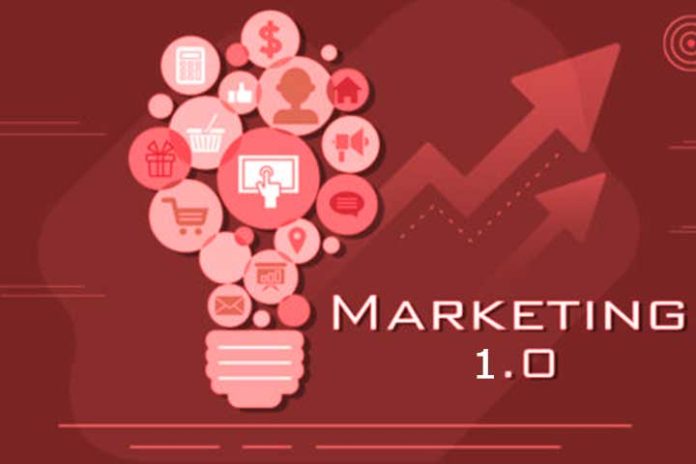Years ago, apparently, each sector was positioned to produce, market and advertise its products. At that time, advertising was focused on selling the product and convincing the consumer that it was the best on the market. This universal strategy was later called Marketing 1.0. Thanks to the process of digital transformation that has accelerated in recent years, strategies have changed and new methods adapted to the new era have been developed. If you are interested in knowing more about the initial phase of marketing, keep reading this post.
Marketing 1.0: Concept
To better understand this concept, it is necessary to mention the father of this technique, and expose What is Marketing 1.0 according to Kotler? He himself explains that Marketing 1.0 is based on the product and is based on the basic needs of the client, he does not worry about his wishes or his impressions. The main objective was to sell, there was no market segmentation, the important thing was sales and attracting more customers. The strategies used were to develop the product and position it in the market.
We can say that Marketing 1.0 is an advertising and sales strategy that is focused solely on the commercial area. For this, the mass media were used, such as: television, radio, press, etc. Its target audience was the masses, therefore personalization and the search to satisfy young children was viable.
However, it must be borne in mind that although this does not work in the current era, three or four decades ago this strategy was the best way to sell. It was a standard method that only sought to make itself known through the mass media, without worrying about the needs of the consumer. In this case, the only thing that mattered was to highlight the benefits of the product and compare them with those of the competition.
For this reason, the mass media had a volume of clients, thanks to the fact that companies paid for advertising. Likewise, the promotions, despite being focused on sales, had to be impressive, something that is still valid today.
Main features
Now, to summarize a little more what was previously exposed and that you can easily recognize this type of content and advertising, we present its characteristics below:
- The goal was to sell.
- Their target audience was the masses, they were not targeting small niches.
- It is one way.
- They used advertising adapted to the mass media.
- Advertisements, radio spots, press releases, and billboards were used.
- Only the advantages and benefits of the product were highlighted.
- The company only cared about its own interests.
Also Read: Helpful Tips For Augmented Reality Marketing
Examples of marketing 1.0 What was it really like?
There are many examples of advertising formats that were used in the past. We can highlight the following examples:
1. Commercials on radio, television and cinema
Producing 50 or 40 second spots is what was popular and, generally, large and medium-sized companies could afford this investment. It should be noted that this advertising was something very common, which gave rise to zapping or zapping in English, since the audience did not want to see the spots while waiting for their favorite programs to continue. For this reason, many ads opted for creativity to capture the attention of the audience.
The radio was mostly sponsored by small local businesses. It was not only because they reached a more specific audience, but also because it was much cheaper. In some cases, when the same sponsors could not assume the production costs of the advertisement, it was the same announcers who mentioned it in their program.
2. Billboards
We have all seen them on highways and roads, as well as in the same city or town where we lived. Billboards of different formats with products and brands, either because of its close location or simply to promote it. Today, these types of ads have been replaced by promotional displays in the same places.
3. Print Ads
The press was also a good medium chosen to announce specific promotions, with striking images or report the benefits of a brand. On the other hand, the same thing happened in magazines, even giving rise to including coupons that people could redeem in supermarkets to get discounts or free products. These Marketing 1.0 strategies are still used today.
Likewise, when businesses wanted to make themselves known, they made their vendors take to the streets and hand out promotional leaflets or flyers to passers-by.
4. Direct sells
In this case, the seller used his persuasion skills to attract customers and convince them to purchase his products or services. This point is related to the previous one, vendors handed out promotional flyers to passers-by, but they also had to talk to them to get their attention. In the event that a person showed interest, they looked for the ideal way for the potential client to enter the establishment to buy.
5. Telesales
Telephone companies used to take advantage of their ability to contact users directly and make promotions through calls. Likewise, this service was also used by other entities, such as banks to collect and sell products or services. In this particular case, sales were a little more personalized and direct because there was direct communication between the seller and the consumer.
Also Read: Advantages Of Email Marketing And The Importance Of Newsletters


